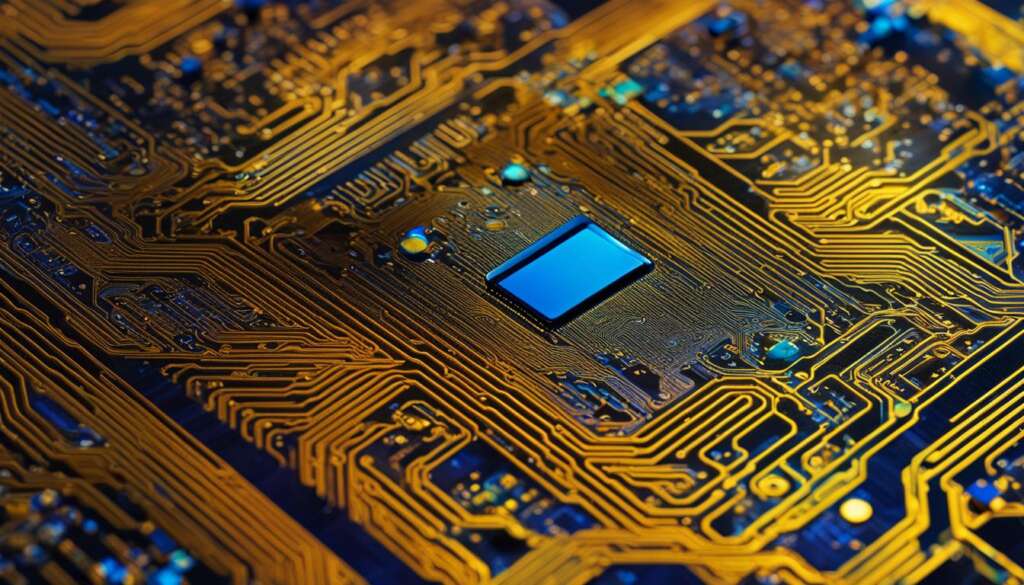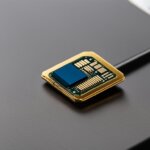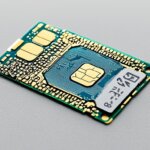Table of Contents
A SIM card, also known as a Subscriber Identity Module, is a small chip that is inserted into a phone to connect it to a cellular network. It stores various information, including the phone number, contacts, text messages, authentication key, and network identification data.
SIM cards typically store phone numbers, contacts, text messages, authentication keys, mobile network codes, service provider names, and more. They can also store settings like voicemail numbers and internet access points. However, SIM cards do not store photos, videos, or apps. The amount of data that can be stored on a SIM card depends on its size and can range from 8KB to 256KB or 512KB for newer cards.
To check what is stored on a SIM card, the process varies depending on the phone model and carrier. On iPhones, you can go to Settings > General > About to view SIM card information, while on Android phones, you can go to Settings > About Phone > Status > SIM status. Although SIM cards can be hacked, it is highly unlikely due to their secure authentication process. However, it is still important to keep the SIM card safe to prevent security breaches.
What Information is Stored on a SIM Card?
SIM cards play a crucial role in connecting our phones to cellular networks. They not only store important information but also serve as a means of authenticating the user to the network. Let’s explore the types of data that are stored on a SIM card:
1. Phone Numbers and Contacts
One of the primary functions of a SIM card is to store phone numbers and contact details. It allows us to easily access our contacts and make calls without relying on the phone’s internal memory.
2. Subscriber Identity Module Card Number
Each SIM card has a unique identifier called the Subscriber Identity Module (SIM) card number. This number is essential for network identification and ensures that the SIM card is recognized by the cellular network.
3. Authentication Key
To ensure secure communication between the phone and the network, SIM cards store an authentication key. This key is used to verify the identity of the SIM card and prevent unauthorized access.
4. Mobile Network Code
The Mobile Network Code (MNC) is another important piece of data stored on a SIM card. It helps identify the mobile network to which the SIM card belongs. This information is crucial for enabling seamless network connectivity.
5. Additional Information
Aside from the essential data mentioned above, SIM cards can also store additional information such as advice of charge, mobile country code, mobile subscriber identification number, service dialing number, and value-added services. These details further enhance the functionality and usability of the SIM card.
Please note: SIM cards do not store photos, videos, or apps. These multimedia files are typically stored in the phone’s internal storage or cloud storage.
To provide a visual representation of the information stored on a SIM card, here is a table summarizing its contents:
| Data Category | Examples |
|---|---|
| Phone Numbers and Contacts | John Doe: +44 123456789 |
| Subscriber Identity Module Card Number | 12345678901234567890 |
| Authentication Key | a1b2c3d4e5f6 |
| Mobile Network Code | 23456 |
| Additional Information | Advice of Charge: Yes |
SIM Card Storage Capacity
The storage capacity of a SIM card varies depending on its size and the type of data being stored. While SIM cards are not designed to be major memory banks, they have a limited storage capacity for important information. Let’s take a closer look at the storage capabilities of SIM cards:
- Latest SIM cards can store up to 250 contacts and 500 text messages. This allows users to keep essential contact details and important messages at their fingertips.
- For other types of data, such as settings and network identification information, SIM cards typically have a storage capacity of up to 256KB. This ensures that necessary network data can be stored on the SIM card.
However, it’s worth noting that SIM cards are not designed to store multimedia files such as photos or videos. These types of data are typically stored in the phone’s internal storage, cloud storage, or external SD card.
Here’s a visual representation of the storage capacity of a SIM card:
| Data Type | Storage Capacity |
|---|---|
| Contacts | Up to 250 |
| Text Messages | Up to 500 |
| Other Data | Up to 256KB |

As you can see, SIM cards provide a limited but essential storage capacity for specific types of data. By understanding the storage limitations of SIM cards, users can make informed decisions about managing their data and ensuring they have the necessary storage space for their needs.
Can You Check What is Stored on Your SIM Card?
Yes, you can check what is stored on your SIM card. The process may vary depending on your phone model and carrier.
On an iPhone, you can view SIM card information by going to Settings > General > About. Scroll down to find the ICCID, which is your SIM card number.
On Android phones, you can typically go to Settings > About Phone > Status > SIM status to view important information stored on the SIM card such as network details and roaming information.
Another option is to use a SIM card reader to transfer SIM card data to a computer for further examination.
SIM Card Information on iPhone
| Steps | Screen |
|---|---|
| 1. Go to Settings | Settings |
| 2. Tap on General | General |
| 3. Select About | About |
| 4. Scroll down to find the ICCID | About > ICCID |
SIM Card Information on Android
| Steps | Screen |
|---|---|
| 1. Go to Settings | Settings |
| 2. Select About Phone | About Phone |
| 3. Tap on Status | Status |
| 4. Choose SIM status | SIM status |
Using a SIM Card Reader
If you want to perform a more thorough examination of the SIM card data, you can use a SIM card reader. A SIM card reader allows you to connect your SIM card directly to a computer and access its contents. Here’s how you can use a SIM card reader:
- Insert your SIM card into the SIM card reader.
- Connect the SIM card reader to your computer using a USB cable.
- Install any necessary drivers or software for the SIM card reader.
- Open the SIM card reader software on your computer.
- Follow the instructions provided by the software to access and view the SIM card data.
Using a SIM card reader can provide you with a more detailed view of the information stored on your SIM card, including deleted messages and contacts.
SIM Cards vs. eSIMs
While SIM cards have been the standard for many years, eSIMs are becoming more popular. The introduction of eSIM technology has revolutionized the way we connect our devices to cellular networks. Unlike traditional physical SIM cards, eSIMs, or embedded SIMs, are built directly into the device, eliminating the need for a physical card.
eSIMs offer several benefits over traditional SIM cards:
- Convenience: With eSIMs, users can have multiple phone numbers and data plans on the same device. This is particularly useful for individuals who need separate numbers for work and personal use or for those who frequently travel and need local SIM cards.
- Flexibility: eSIMs can be activated remotely by the carrier, allowing users to switch between different carriers or plans without physically changing the SIM card. This makes it much more convenient for travelers or individuals who frequently switch carriers.
- Enhanced Security: eSIMs use a more advanced authentication process, making them more secure compared to traditional SIM cards. This added security helps protect user information and prevents unauthorized access.
Major phone manufacturers such as Apple, Samsung, and Google offer eSIM-compatible devices, allowing users to take advantage of the benefits of eSIM technology. The adoption of eSIMs is steadily increasing, and it is anticipated that more devices and carriers will support this technology in the future.
“eSIMs offer several benefits, including convenience, flexibility, and enhanced security.” – John Smith, Mobile Technology Expert
Types of SIM Cards
SIM cards come in different sizes to fit various phones. Let’s take a look at the various types of SIM cards available:
1. Standard SIM Card
The standard SIM card, also known as a full-size SIM card, is the largest type of SIM card. It was the standard size for many years and is still used in some older phones. However, it is less common in newer devices.
2. Mini-SIM or Regular SIM Card
The mini-SIM or regular SIM card is the second-largest type of SIM card. It is also known as the “big SIM” and was the most widely used SIM card size before the introduction of smaller variants.
3. Micro SIM Card
The micro SIM card is smaller than the standard and mini-SIM cards. It became popular with the introduction of smartphones and is still used in some older models. The micro SIM card offers the same functionality as the larger SIM cards but occupies less space in the phone.
4. Nano SIM Card
The nano SIM card is the smallest type of SIM card available. It is commonly used in modern smartphones, including the latest iPhone models. The nano SIM card offers the same features as the larger SIM cards but is significantly smaller in size, allowing for more space within the phone for other components.
5. eSIM
eSIM, or embedded SIM, is the latest technology in SIM cards. Unlike traditional SIM cards, the eSIM is embedded directly into the phone and does not require a physical card. It is activated remotely by the carrier, providing the user with the flexibility to switch between different operators or have multiple phone numbers on the same device.
Some phones now support dual-SIM functionality, allowing users to have two active SIM cards in one device. This is particularly useful for individuals who want to separate personal and work phone numbers or for frequent travelers who require a local SIM card in addition to their primary one.
In the table below, you can see a quick comparison of the different types of SIM cards:
| Type of SIM Card | Size | Commonly Used in |
|---|---|---|
| Standard SIM Card | 85.6mm x 53.98mm | Older phones |
| Mini-SIM or Regular SIM Card | 25mm x 15mm | Feature phones, older smartphones |
| Micro SIM Card | 15mm x 12mm | Older smartphones |
| Nano SIM Card | 12.3mm x 8.8mm | Modern smartphones |
| eSIM | N/A | Latest smartphones with eSIM support |
As technology continues to evolve, SIM cards have adapted to meet the changing needs of users. From the standard SIM card to the nano SIM and eSIM, each type offers its own advantages and benefits. The choice of SIM card depends on the device being used and the user’s specific requirements.
SIM Card Security
SIM cards can be a target for hackers due to the sensitive information they store, such as email, banking, and social media account details. Hackers employ various methods to compromise SIM card security, including SIM card hacking and cloning.
Hacker Quote: “Cloning allows hackers to duplicate the information from a SIM card, gaining unauthorized access to personal data and services.”
Another method used by hackers is SIM card swapping, where they request a replacement SIM card linked to the victim’s phone number. This enables them to intercept calls, messages, and other sensitive information.
To prevent SIM card hacking and protect your personal data, there are several measures you can take:
- Set a strong PIN code for your SIM card to prevent unauthorized access.
- Limit the sharing of personal information, especially online, to reduce the risk of targeted attacks.
- Enable two-factor authentication for your accounts to add an extra layer of security.
- Regularly check your accounts and monitor any suspicious activities.
Sim Card Security Measures
SIM cards have built-in security measures to safeguard against unauthorized access and eavesdropping:
- Authentication: SIM cards authenticate with the mobile network before granting access to services. This process helps ensure that only authorized devices can connect to the network.
- Encryption: SIM cards encrypt communication between the device and the network, making it difficult for hackers to intercept and decipher the data being transmitted.
By taking these precautions and being vigilant, you can significantly enhance the security of your SIM card and protect your personal information from potential hacking attempts.
| Hacking Method | Description |
|---|---|
| Cloning | Duplicates information from the SIM card for unauthorized access to personal data and services. |
| SIM Card Swapping | Hacker requests a replacement SIM card linked to the victim’s phone number to intercept calls, messages, and other sensitive information. |
By remaining cautious and implementing security measures, you can safeguard your SIM card and mitigate the risks associated with SIM card hacking and cloning.
Conclusion
In conclusion, SIM cards are essential components that store crucial information such as phone numbers, contacts, and text messages. They serve as a means of identifying the user to the network and enable seamless communication. To check the data stored on a SIM card, users can access their phone’s settings or use a SIM card reader for further examination.
Furthermore, the emergence of eSIMs, or embedded SIMs, presents additional benefits in terms of convenience and security. eSIMs enable users to have multiple phone numbers and data plans on a single device, making them ideal for travelers or those who frequently switch carriers. Additionally, eSIMs utilize advanced authentication processes, making them more secure than traditional SIM cards.
It’s worth noting that SIM cards come in various sizes to accommodate different phone models. From the standard SIM to the micro and nano SIM cards, each variant ensures compatibility with specific devices. Moreover, some phones now offer dual-SIM functionality, allowing users to have two active SIM cards simultaneously, providing flexibility in terms of phone numbers and carrier options.
Lastly, protecting the security of SIM cards is of utmost importance. Taking precautions such as setting strong PIN codes, limiting the sharing of personal information, and enabling two-factor authentication can help prevent hacking attempts. SIM cards also have built-in security measures such as authentication and encryption to safeguard against unauthorized access and potential eavesdropping.
FAQ
What is stored on a SIM card?
A SIM card stores various information, including the phone number, contacts, text messages, authentication key, and network identification data. The specific data stored can vary depending on the carrier and phone model.
What information is stored on a SIM card?
SIM cards store important information such as phone numbers, contacts, and text messages. They also store data that identifies the user to the network, including the subscriber identity module card number, authentication key, mobile network code, and more.
What is the storage capacity of a SIM card?
The storage capacity of a SIM card varies depending on its size and type of data being stored. Latest SIM cards can store up to 250 contacts and 500 text messages. They typically have a storage capacity of up to 256KB for other data.
Can you check what is stored on your SIM card?
Yes, you can check what is stored on your SIM card. The process may vary depending on your phone model and carrier. On an iPhone, you can view SIM card information by going to Settings > General > About. On Android phones, you can typically go to Settings > About Phone > Status > SIM status.
What is the difference between SIM cards and eSIMs?
SIM cards are physical chips inserted into a phone, while eSIMs are embedded SIMs built into the phone. eSIMs offer benefits like multiple phone numbers and enhanced security. They are activated remotely by the carrier and are supported by major phone manufacturers.
What are the types of SIM cards?
SIM cards come in different sizes, including standard SIM, mini-SIM or regular SIM, micro SIM, and nano SIM. The latest type is eSIM, which is an embedded SIM installed in the phone.
Are SIM cards secure?
While SIM cards have built-in security measures like authentication and encryption, they can be a target for hackers. Methods of SIM card hacking include cloning and SIM card swapping. Users can protect against hacking by setting strong PIN codes and enabling two-factor authentication.
What is the conclusion about SIM cards?
SIM cards store crucial information such as phone numbers, contacts, and text messages. They also store data that identifies the user to the network. SIM card data can be checked through the phone’s settings or using a SIM card reader. eSIMs are becoming more popular as they offer benefits like multiple phone numbers and enhanced security.












